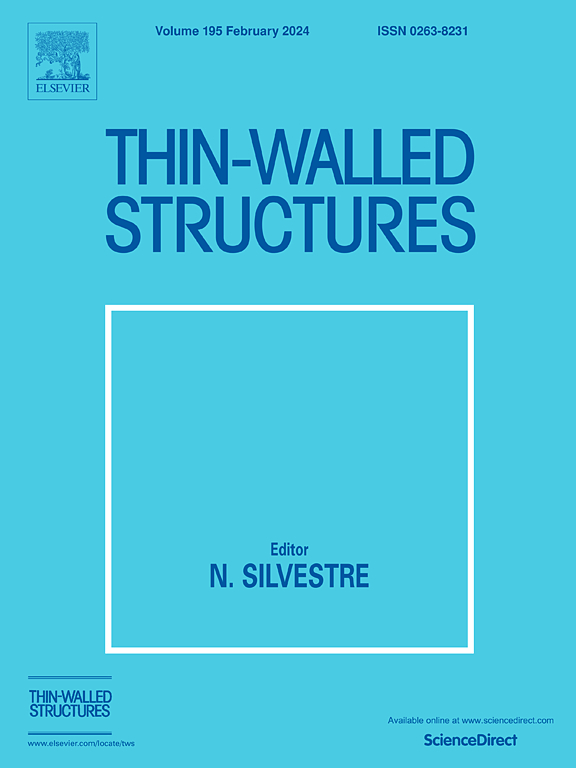Free vibration of functionally graded graphene platelets reinforced porous composite plate with multiple cutouts
IF 5.7
1区 工程技术
Q1 ENGINEERING, CIVIL
引用次数: 0
Abstract
This paper is the first to investigate the free vibration of functionally graded graphene platelets reinforced porous composite (FG-GPLRPC) plate with multiple cutouts, including a rhombic hole, a teardrop-shaped hole and a crack. Based on Mindlin-Reissner plate theory and Hamilton's principle, the corresponding governing equations and boundary conditions are derived. The generalized differential quadrature finite element method (GDQFEM) is used to fill the gap of existing methods, and the mesh discretization and element mapping are carried out. By solving the eigenvalue algebraic system, the free vibration analysis of such plates is realized. The study focuses on the influence of cutout size, cutout type, boundary condition, and material parameter on the natural frequency. The results show that, under different boundary conditions, an increase in cutout size and crack length leads to a gradual reduction in the natural frequency. Notably, the reduction rate for teardrop-shaped holes is significantly greater than for rhombic holes, and the reduction caused by rhombic holes is larger than that caused by cracks.
求助全文
约1分钟内获得全文
求助全文
来源期刊

Thin-Walled Structures
工程技术-工程:土木
CiteScore
9.60
自引率
20.30%
发文量
801
审稿时长
66 days
期刊介绍:
Thin-walled structures comprises an important and growing proportion of engineering construction with areas of application becoming increasingly diverse, ranging from aircraft, bridges, ships and oil rigs to storage vessels, industrial buildings and warehouses.
Many factors, including cost and weight economy, new materials and processes and the growth of powerful methods of analysis have contributed to this growth, and led to the need for a journal which concentrates specifically on structures in which problems arise due to the thinness of the walls. This field includes cold– formed sections, plate and shell structures, reinforced plastics structures and aluminium structures, and is of importance in many branches of engineering.
The primary criterion for consideration of papers in Thin–Walled Structures is that they must be concerned with thin–walled structures or the basic problems inherent in thin–walled structures. Provided this criterion is satisfied no restriction is placed on the type of construction, material or field of application. Papers on theory, experiment, design, etc., are published and it is expected that many papers will contain aspects of all three.
 求助内容:
求助内容: 应助结果提醒方式:
应助结果提醒方式:


